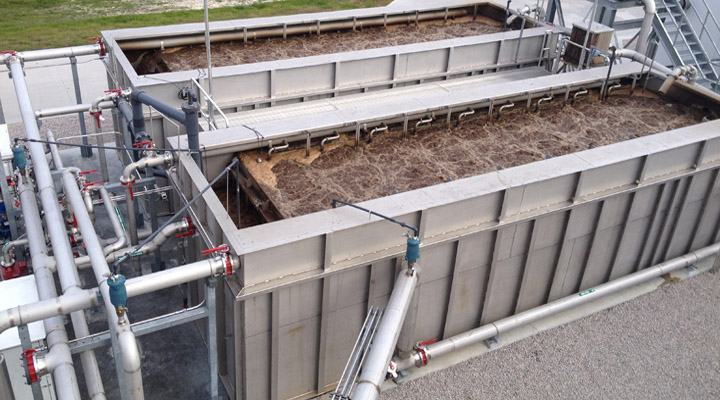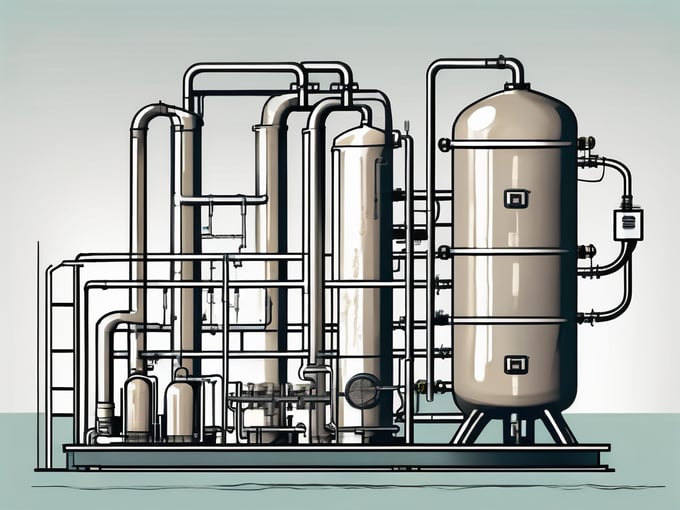The Role of Membrane Bioreactor in Achieving Higher Effluent Quality Standards
The Role of Membrane Bioreactor in Achieving Higher Effluent Quality Standards
Blog Article
Membrane Layer Bioreactors Described: Efficient Solutions for Clean Water
Membrane layer bioreactors (MBRs) have emerged as an innovative option for attending to the pressing challenges of wastewater therapy - Membrane Bioreactor. By incorporating organic processes with advanced membrane layer filtering, MBRs not only boost the high quality of treated water yet likewise decrease the spatial demands of treatment centers.

What Are Membrane Bioreactors?
Membrane layer bioreactors (MBRs) are advanced wastewater treatment systems that incorporate biological degradation procedures with membrane purification modern technology. This combination permits the reliable removal of contaminants from water, making MBRs a favored choice in numerous applications, including metropolitan wastewater treatment and commercial effluent administration.

One of the vital benefits of MBRs is their capability to generate premium effluent, frequently ideal for reuse in irrigation or industrial processes. In addition, MBRs need a smaller sized impact contrasted to standard treatment systems, making them optimal for metropolitan settings where area might be limited.
In addition, MBRs can effectively manage varying influent tons and are much less prone to the effects of hazardous shocks. These characteristics add to their expanding popularity as a sustainable option for dealing with the boosting need for tidy water while reducing ecological influences.
How Membrane Bioreactors Work
While the procedure of membrane layer bioreactors (MBRs) might seem complex, it basically focuses on the synergy between biological procedures and membrane layer purification. MBRs integrate a biological treatment process, commonly activated sludge, with a membrane separation system to deal with wastewater successfully.
In an MBR system, wastewater is initial presented right into a bioreactor where microbes deteriorate raw material and other contaminants. The biological activity reduces the concentration of pollutants while promoting the growth of biomass. Following this organic therapy, the mixed liquor undergoes membrane filtration, which can be microfiltration or ultrafiltration, relying on the desired effluent quality.
The membrane layers work as a physical obstacle, allowing water and small solutes to pass while retaining suspended solids and bigger particles. This makes it possible for the system to preserve a high concentration of biomass within the reactor, enhancing the treatment performance.
Moreover, the continual splitting up of treated water from the biomass assists in a small style and reduces the footprint of the therapy center. Generally, the combination of biological destruction and membrane layer filtering in MBRs results in dependable and effective wastewater therapy, making sure premium effluent appropriate for various applications.
Benefits of MBR Innovation
One of the vital benefits of membrane layer bioreactor (MBR) innovation is its capacity to generate premium effluent with a substantially reduced impact contrasted to conventional wastewater therapy methods. MBR systems properly integrate biological therapy and membrane layer filtering, leading to remarkable removal her response of impurities, consisting of put on hold solids, virus, and organic matter. This capacity brings about effluent that frequently fulfills or surpasses stringent regulative criteria for reuse and discharge.
Furthermore, MBR modern technology enables greater biomass concentrations, which improves the therapy efficiency and minimizes the required reactor quantity. This portable design is especially beneficial in metropolitan locations where room is limited. The operational versatility of MBR systems additionally implies they can adjust to differing influent qualities and flow rates, making them ideal for a wide variety of applications.
Additionally, the reduced sludge production related to MBR procedures adds to decrease operational and maintenance costs. The membranes act as a recommended you read physical obstacle, decreasing the threat of clogging and enabling longer operational durations between cleaning. Generally, the benefits of MBR modern technology make it an attractive solution for sustainable wastewater treatment, dealing with both ecological concerns and the requirement for effective source monitoring.
Applications of Membrane Layer Bioreactors
With their convenience and performance, membrane layer bioreactors (MBRs) locate applications throughout numerous industries, including community wastewater treatment, industrial procedures, and also water improvement. In local settings, MBRs offer a compact solution for dealing with wastewater, properly getting rid of impurities while all at once generating high-grade effluent that fulfills rigid regulative standards. This makes them specifically ideal for locations with limited space.
In commercial applications, MBR innovation is utilized for dealing with procedure water, particularly in industries such as food and drink, pharmaceuticals, and petrochemicals. These industries take advantage of MBRs' capability to handle high natural tons and their effectiveness in recouping useful resources from wastewater, such as nutrients and water.
Moreover, MBRs play a critical function in water reclamation campaigns, allowing the reuse of treated wastewater for watering, industrial procedures, or also as drinkable water after further therapy (Membrane Bioreactor). Their effectiveness in removing microorganisms and pollutants makes them a reputable selection for making certain water high quality in various reuse applications
Future of Water Treatment Solutions
The future of water therapy solutions is positioned for transformative developments driven by technical innovation and raising environmental recognition. As worldwide water deficiency becomes a pushing concern, brand-new methodologies, consisting of membrane layer bioreactor (MBR) systems, are readied to play an essential role in improving the performance and sustainability of water treatment processes.
Arising technologies such as expert system and machine discovering are anticipated to optimize treatment operations, permitting real-time monitoring and predictive maintenance. This will certainly boost the total reliability and efficiency of water therapy centers. Improvements in membrane materials, such as graphene and nanofiltration, promise to boost permeation prices and lower fouling, leading to reduced power intake and functional expenses.
Furthermore, the assimilation of renewable resource resources into water treatment plants will certainly add to greener methods. The circular economy design will additionally obtain grip, motivating the recovery of valuable sources from wastewater, such as nutrients and power.
Final Thought
Membrane layer bioreactors (MBRs) have arised as a sophisticated remedy for attending to the pushing difficulties of wastewater treatment. By integrating organic processes with sophisticated membrane purification, MBRs not just improve the top quality of treated water yet also lower the spatial requirements of therapy facilities.One of the crucial benefits of membrane bioreactor (MBR) modern technology is its ability to create top quality effluent with a dramatically decreased impact compared to traditional wastewater therapy methods.With their versatility and performance, membrane bioreactors (MBRs) discover applications throughout numerous industries, consisting of metropolitan wastewater treatment, industrial processes, and also water recovery.In conclusion, membrane bioreactors stand for a substantial advancement in wastewater treatment modern technology, incorporating biological processes with effective membrane layer purification to generate top quality effluent.
Report this page